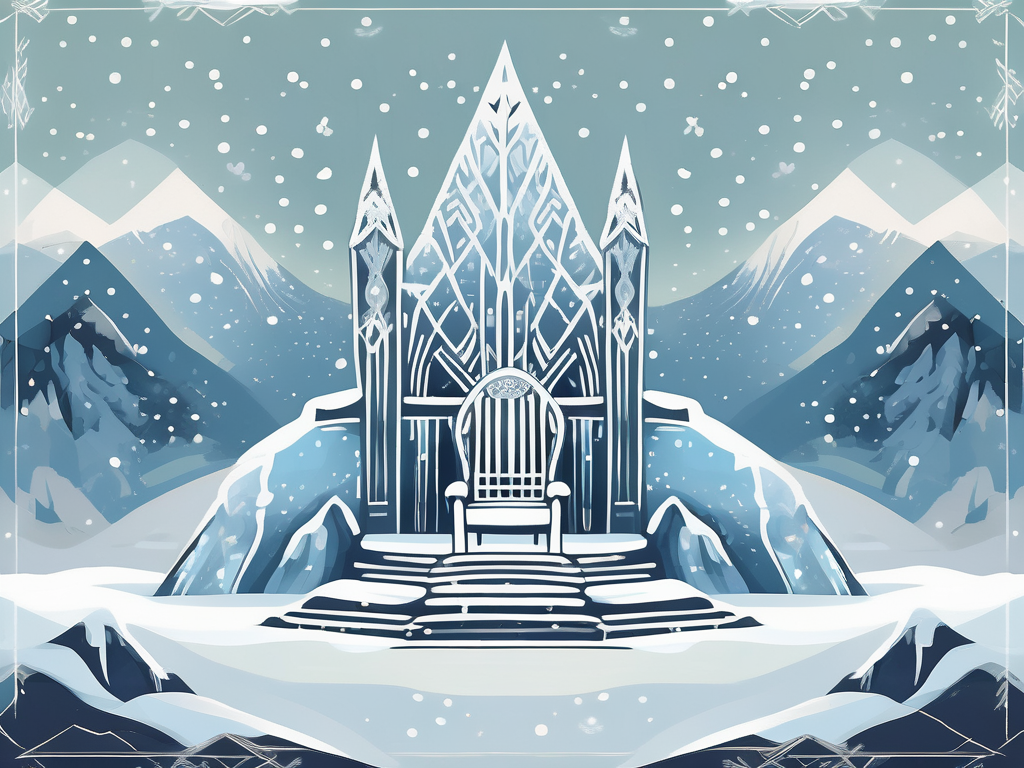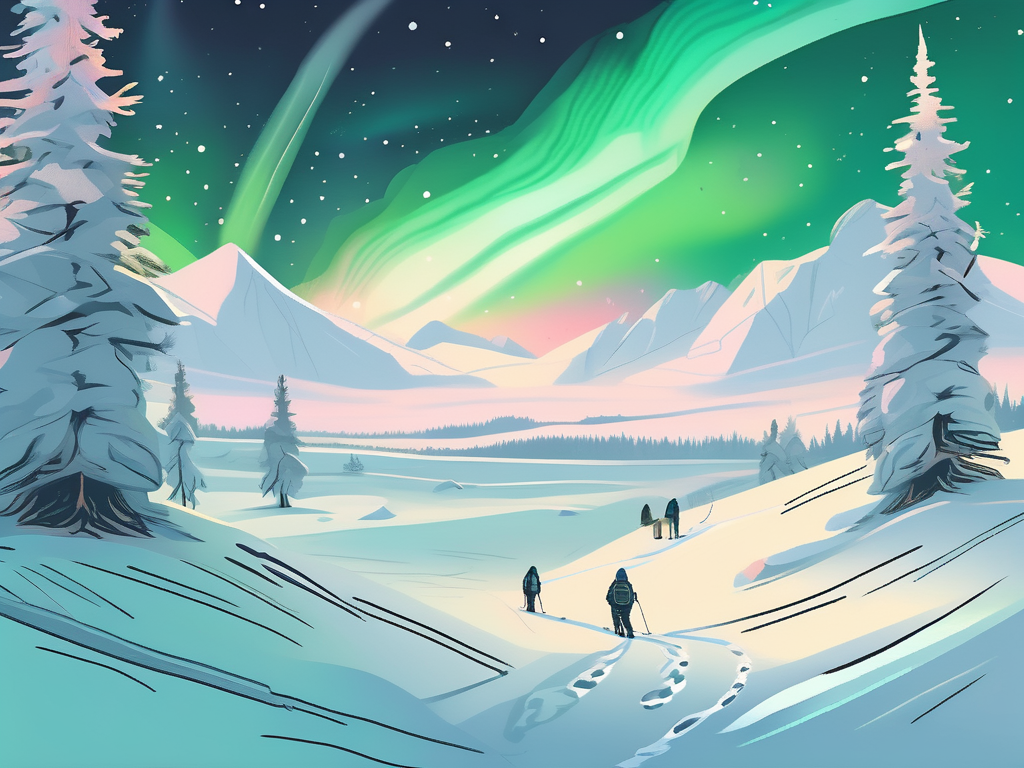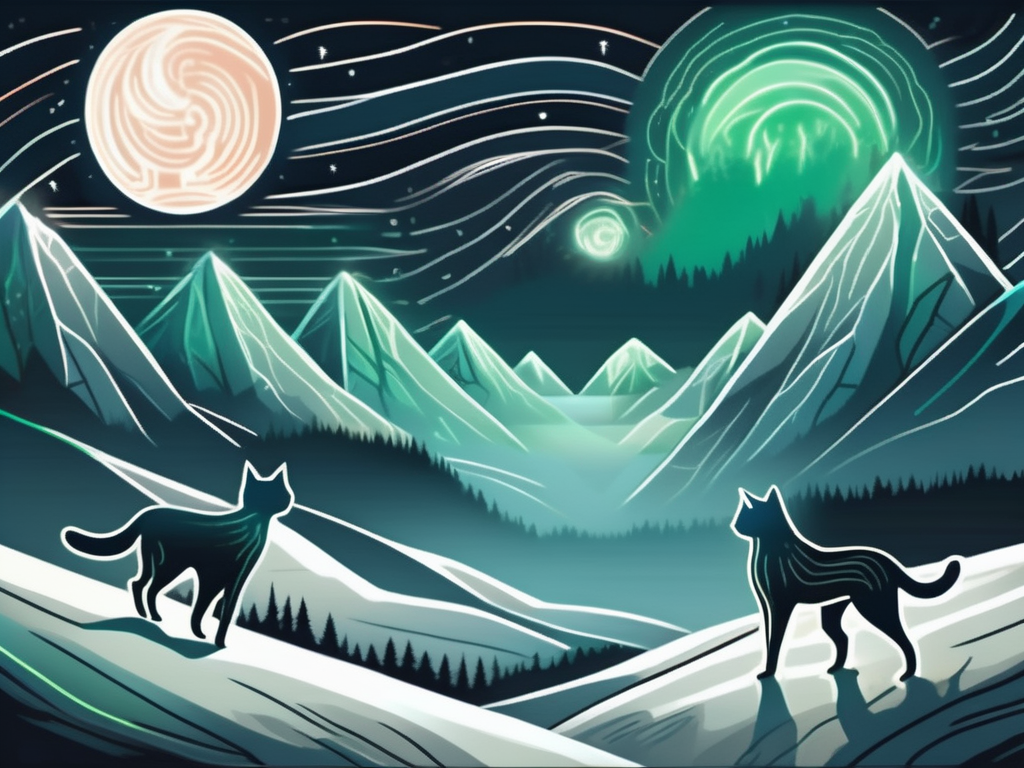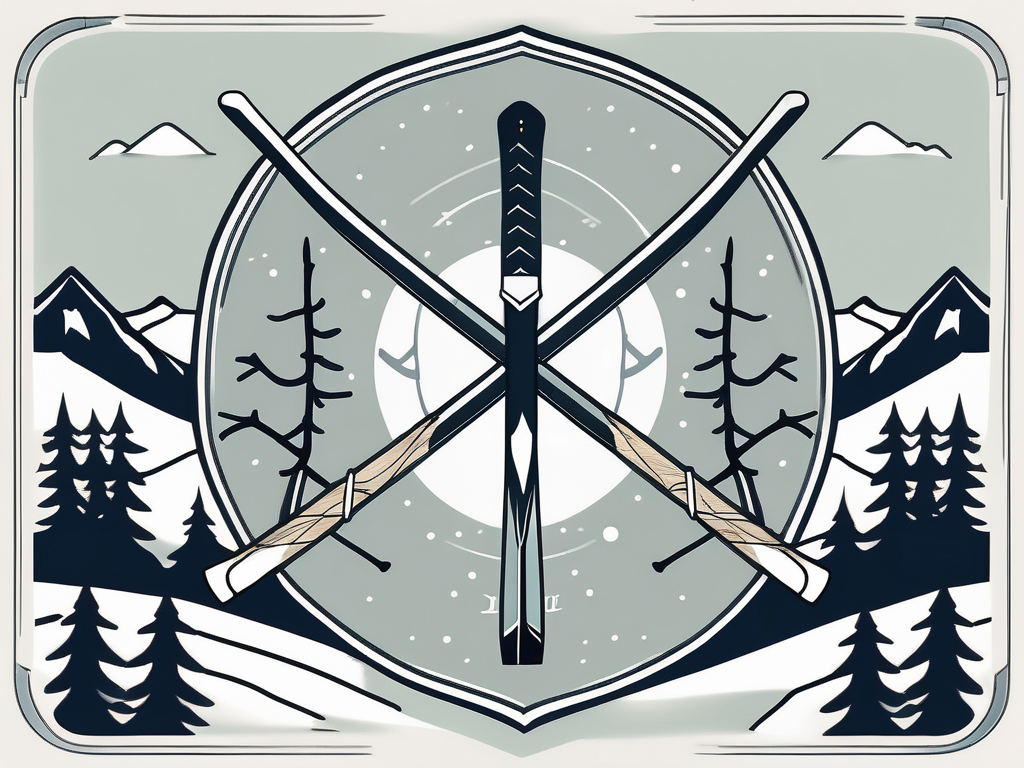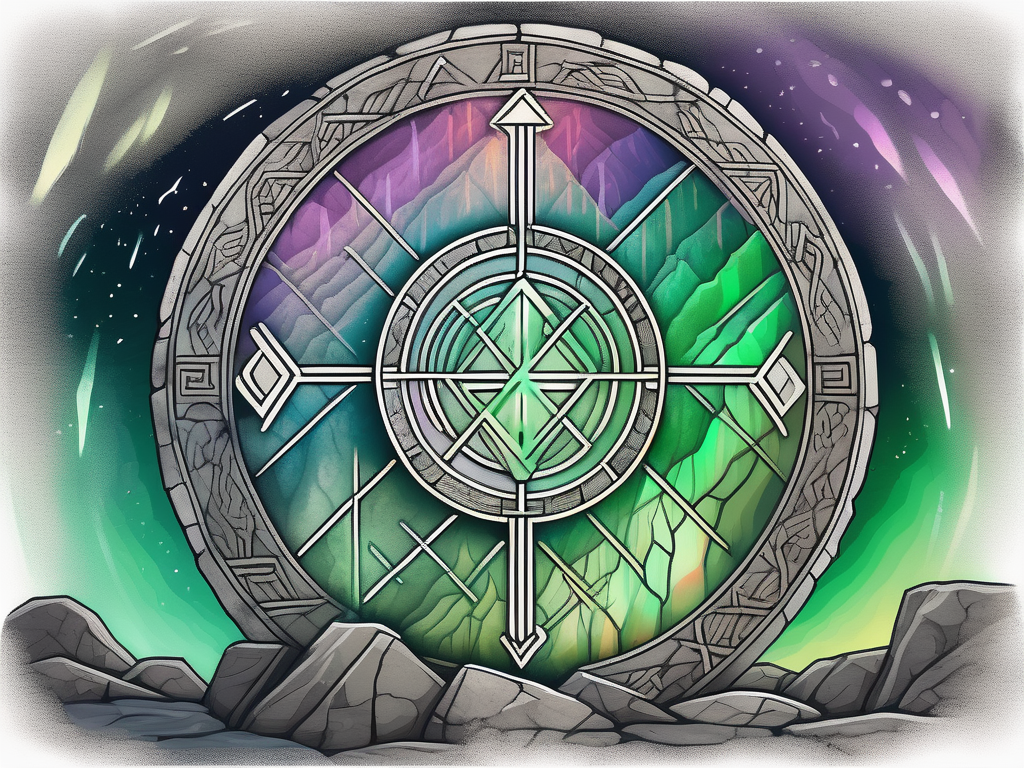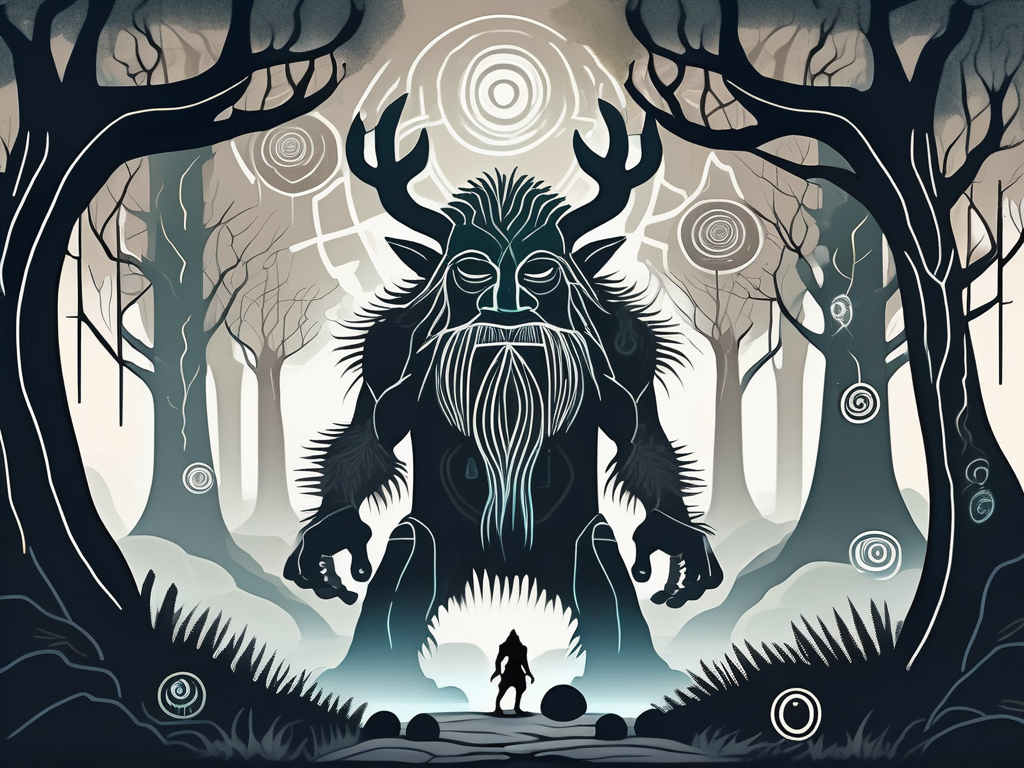Winter is a magical season, filled with chilly breezes and snow-covered landscapes. In Norse mythology, this season is personified by the goddess Skadi. Let’s delve into the world of Norse mythology and unravel the mysteries surrounding this intriguing deity.
Understanding Norse Mythology
Norse mythology is a rich tapestry of stories and legends that originated from the ancient Norse people. These myths depict a complex pantheon of gods and goddesses, each with their distinct powers and personalities.
Let’s delve deeper into the fascinating world of Norse mythology and explore the intricate details of this ancient belief system.
The Pantheon of Norse Gods and Goddesses
The Norse pantheon consists of a diverse group of deities, ranging from wise and powerful gods like Odin and Thor, to goddesses embodying different aspects of nature and life. One such goddess is Skadi, who represents the harsh beauty of winter.
Odin, the Allfather, is the chief god of the Norse pantheon. He is associated with wisdom, knowledge, and war. Known for his one-eyed appearance and his insatiable thirst for knowledge, Odin is often depicted as a wise old man, wearing a cloak and carrying a spear.
Thor, the god of thunder, is another prominent figure in Norse mythology. He is known for his immense strength and his trusty hammer, Mjolnir. Thor is often portrayed as a protector of both gods and humans, defending them against the forces of chaos and evil.
Freya, the goddess of love and beauty, is highly revered in Norse mythology. She is associated with fertility, desire, and magic. Freya is depicted as a stunningly beautiful woman, adorned in a cloak of falcon feathers and riding a chariot pulled by two large cats.
These are just a few examples of the diverse and intriguing gods and goddesses within the Norse pantheon. Each deity has their own unique story and role to play in the mythology.
The Role of Mythology in Norse Culture
Mythology played a significant role in Norse culture. It served as a way to explain natural phenomena and teach valuable lessons about life, morality, and the consequences of one’s actions. These myths were passed down orally from generation to generation, preserving the rich heritage of the Norse people.
One of the most famous Norse myths is the story of Ragnarok, the apocalyptic battle that marks the end of the world. This myth illustrates the cyclical nature of life and the inevitable destruction and rebirth that occurs in the Norse cosmology.
Another important aspect of Norse mythology is the concept of Valhalla, a majestic hall located in Asgard, the realm of the gods. Valhalla is a place where fallen warriors are taken after death, where they feast and fight alongside the gods in preparation for the final battle of Ragnarok.
Mythology also provided the Norse people with a sense of identity and cultural pride. It was a way for them to connect with their ancestors and understand their place in the world. The stories and legends served as a source of inspiration and guidance, shaping the values and beliefs of the Norse society.
Overall, Norse mythology is a captivating and complex system of beliefs that offers a glimpse into the rich cultural heritage of the ancient Norse people. Through their myths, we can explore the depths of human nature, the forces of the natural world, and the eternal struggle between order and chaos.
The Goddess of Winter: Skadi
Skadi, sometimes referred to as Skade, is the Norse goddess associated with winter, skiing, and hunting. She is a fierce and independent deity, embodying the strength and resilience needed to endure the harsh winter months.
Skadi’s presence is felt in the biting cold winds that sweep across the frozen landscapes, in the snowflakes that dance gracefully from the darkened skies, and in the stillness that settles over the land during the long winter nights. She is both feared and revered by mortals, for her power is unmatched and her domain is unforgiving.
Skadi’s Origin Story
According to Norse mythology, Skadi was the daughter of the giant Thjazi. Seeking revenge for her father’s death at the hands of the gods, Skadi ventured to Asgard, the realm of the gods, to demand justice. The gods, recognizing her power and determination, offered her a place among them.
Skadi, with her piercing blue eyes and a heart filled with vengeance, stood before the mighty gods and made her demand. She agreed on one condition – that she could choose a husband from among the gods. However, there was a catch. She could only select her husband based on their feet, as she believed that the appearance of their feet would reveal their true nature. This peculiar condition led to an unexpected union with the mischievous god Njord.
The marriage between Skadi and Njord was an unconventional one, with each deity bringing their own unique qualities to the union. While Skadi reveled in the solitude and harshness of the winter, Njord longed for the warmth of the sun and the gentle caress of the sea. Together, they found a delicate balance, a union of opposites that mirrored the ever-changing seasons.
Skadi’s Powers and Symbols
Skadi possesses a range of powers connected to winter and the wilderness. She is an expert skier, utilizing her skill to traverse the treacherous snowy landscapes. With each graceful glide, she leaves behind a trail of frost, marking her presence in the wintry realm.
Skadi is also an exceptional hunter, exhibiting unmatched precision and cunning. With her bow and arrows in hand, she prowls through the snow-covered forests, her senses heightened and her instincts razor-sharp. Her prey trembles in fear, knowing that escape is futile in the face of her relentless pursuit.
When depicted in art and mythology, Skadi is often seen wearing furs, her cloak billowing behind her as she traverses the icy terrain. Her eyes, as cold and piercing as the winter moon, reflect the wisdom and strength of a goddess who has braved the harshest of winters.
Skadi’s symbols, the bow and arrows, represent her close connection to the natural world and her mastery of survival in the harshest of environments. They are a reminder of her unwavering determination and her ability to adapt and thrive in the face of adversity.
As the goddess of winter, Skadi’s presence is both a reminder of the hardships that come with the season and a celebration of the beauty and resilience that can be found in the depths of winter. She is a testament to the strength that lies within each of us, urging us to embrace the challenges that come our way and to find the beauty in even the coldest of winters.
Skadi’s Influence in Norse Society
Skadi’s presence extends beyond myths and legends. She played a significant role in Norse society, shaping the traditions and beliefs of the people.
Skadi in Norse Rituals and Celebrations
The Norse people revered Skadi and recognized her as a powerful deity to be honored. During the winter solstice, elaborate rituals and ceremonies were held to invoke her blessings and ensure a bountiful and prosperous season ahead. These celebrations often included skiing competitions, feasting, and offerings of game and furs.
Skadi’s Role in Norse Folklore
Skadi’s mythology was woven into the fabric of Norse folklore, captivating the imaginations of storytellers across generations. Tales of her exploits were shared around firesides during long winter nights, inspiring courage and resilience in the face of adversity.
One popular folktale tells of Skadi’s journey to the mountains, where she encountered the god Loki. This chance meeting led to a series of humorous and mischievous adventures, showcasing the interplay between gods and goddesses in Norse mythology.
Skadi’s Presence in Modern Culture
Skadi’s influence extends far beyond the realm of ancient mythology. Her captivating story continues to inspire and find representation in various forms of contemporary art and media.
Skadi in Literature and Art
Skadi’s character has been immortalized in numerous works of literature and poetry. Authors and artists have drawn inspiration from her fierce spirit and affinity for winter landscapes. Through their creations, Skadi’s mythology continues to captivate readers and viewers alike.
Skadi in Film and Television
Hollywood and the television industry have not overlooked Skadi’s intriguing mythology. In recent years, there has been a resurgence of interest in Norse mythology, leading to depictions of Skadi in popular series and movies. These portrayals bring her unique story to a new generation, ensuring her legacy lives on.
Interpreting Skadi: A Modern Perspective
As with any mythological figure, Skadi’s symbolism and relevance resonate differently in the modern world.
Skadi’s Symbolism and its Relevance Today
Skadi symbolizes the power to endure challenging times, adapt to harsh environments, and thrive amidst adversity. Her story serves as a reminder of the value of resilience and the strength found within ourselves when confronted with the harshest of winters, both literal and metaphorical.
The Enduring Appeal of Skadi’s Mythology
Skadi’s mythology continues to captivate and intrigue individuals from all walks of life. Her story reminds us that even in the darkest and coldest of times, there is beauty and strength to be found. Skadi inspires us to embrace our own inner power and face the challenges that come our way with courage and determination.
As we delve into the fascinating world of Norse mythology, we gain a deeper understanding of the goddess of winter, Skadi. Her story not only enriches our knowledge of ancient Norse culture but also resonates with us on a personal level. In her fierce independence and the ability to thrive amidst adversity, Skadi represents the very essence of winter’s captivating beauty and the power within all of us to endure and conquer the coldest seasons of life.
